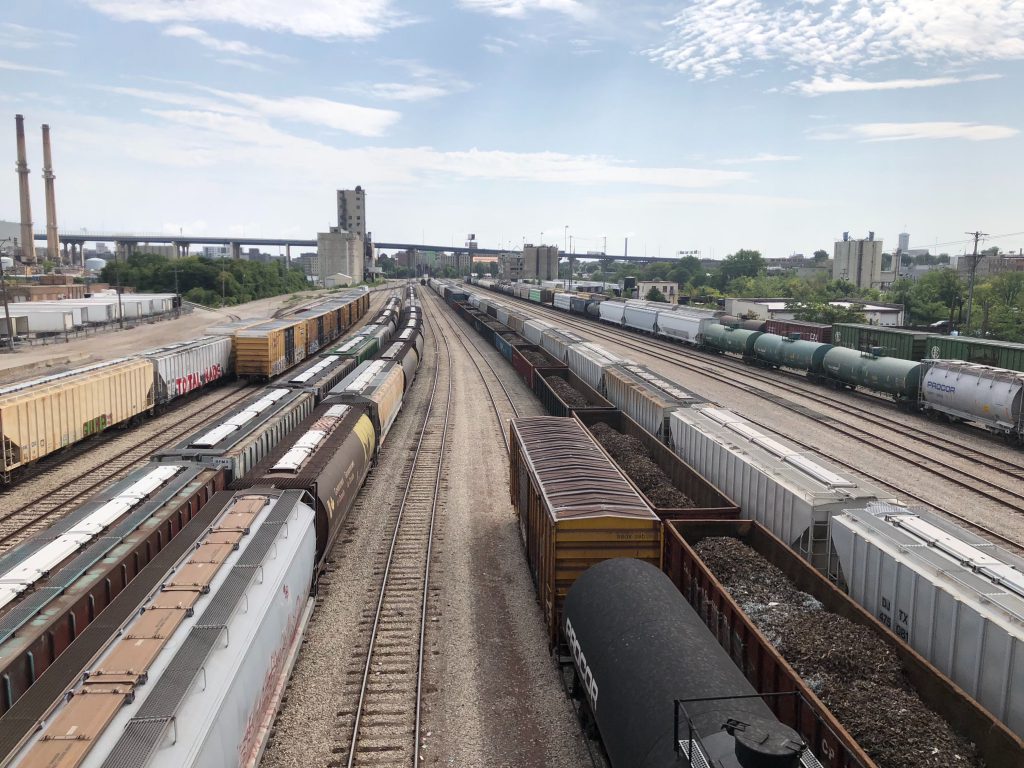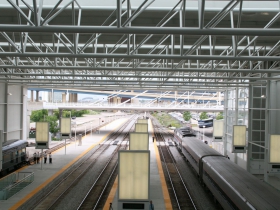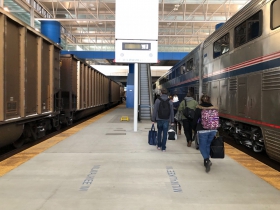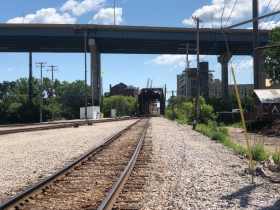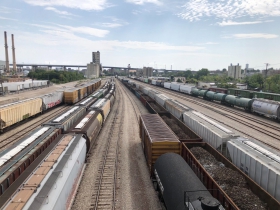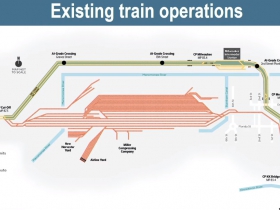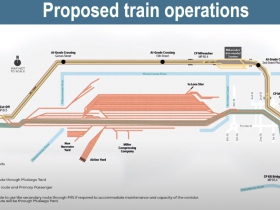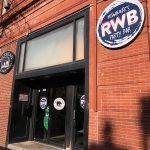State Advancing Hiawatha Expansion
Menomonee Valley rail yard reconfiguration would benefit passenger and freight trains and city motorists
Have thoughts about how to reconfigure the railroad yard in the Menomonee Valley to accommodate more trains? The Wisconsin Department of Transportation would like to hear them.
The seemingly innocuous project is the biggest one Wisconsin must implement to add three daily roundtrips to the Amtrak Hiawatha Service that runs between Milwaukee and Chicago.
The Hiawatha line, with seven daily round trips currently, is the busiest outside of the East Coast. It set a ridership record in 2019 with 876,356 trips.
Diverting trains away from the downtown train station has benefits for those who will never ride a passenger train. Sending trains through the freight yard will reduce the number of trains and length of time they take to pass through grade crossings at N. Plankinton Ave., N. 13th St. and W. Greves St.
“This service is critical to the economic growth and recovery of the region,” said Arun Rao, WisDOT passenger rail implementation manager, of the need to expand the Hiawatha. The state won a $26.6 million federal grant in March to partially fund the $55 million project.
To accommodate the new mainline, bridges would be rehabilitated or replaced and a new, automated signal system (Centralized Traffic Control) would be installed.
Bridges over the Menomonee River and Burnham Canal at each end of the yard, first built for the now-defunct Milwaukee Road, would be replaced while three bridges over a number of Walker’s Point streets (1st, 2nd and Florida) would be rehabilitated. A small bridge over an alley between S. 2nd St. and S. 3rd St., near The Yards apartment building, would be removed.
Construction on the project is expected to begin in late 2022 and be completed at the end of 2023.
Comments, as part of an environmental review process, are due on August 7th and can be submitted to muskego.yard@dot.wi.gov. HNTB is serving as a consultant on the project.
The idea for the bypass is not new. It was a required project to enable the Kenosha-Racine-Milwaukee commuter rail line that never advanced. A proposed private commuter rail system would also need the bypass. WisDOT’s presentation said the department has been working with Canadian Pacific on the project since 2010.
Hiawatha revenue pays for 75 percent of the service’s cost. The rest of the cost is subsidized, with Wisconsin paying 75 percent and Illinois paying 25 percent of that amount.
The expansion plan has a $195 million capital cost.
Other projects remain to be completed in Illinois, including constructing a controversial new siding to hold freight trains and increase line capacity near Glenview and Lake Forest. That project became a political third rail in 2018, with Glenview allocating funds to lobby against the project. In May 2019, the Illinois Department of Transportation pulled support for a federally-required Environmental Impact Study.
Illinois, through its Metra commuter rail agency, won a federal grant in May to repair and reconfigure the Rondout junction near Lake Bluff. The project is one identified as necessary to expand the Hiawatha.
Photos and Site Plans
Project Presentation
If you think stories like this are important, become a member of Urban Milwaukee and help support real, independent journalism. Plus you get some cool added benefits.
Transportation
-
$73 Million Federal Grant Will Help Expand Amtrak Hiawatha in 2026
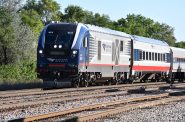 Oct 28th, 2024 by Jeramey Jannene
Oct 28th, 2024 by Jeramey Jannene
-
Park-and-Ride Homeless Encampments Will Be Cleared
 Oct 14th, 2024 by Evan Casey
Oct 14th, 2024 by Evan Casey
-
Oak Leaf Trail Temporarily Closed in Tosa
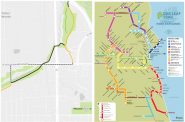 Oct 9th, 2024 by Graham Kilmer
Oct 9th, 2024 by Graham Kilmer


